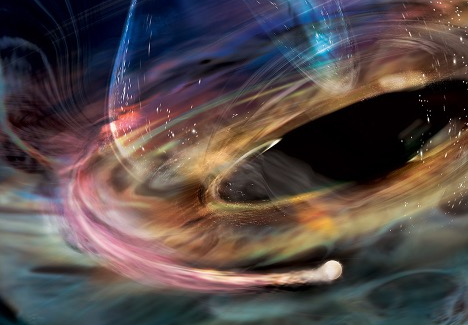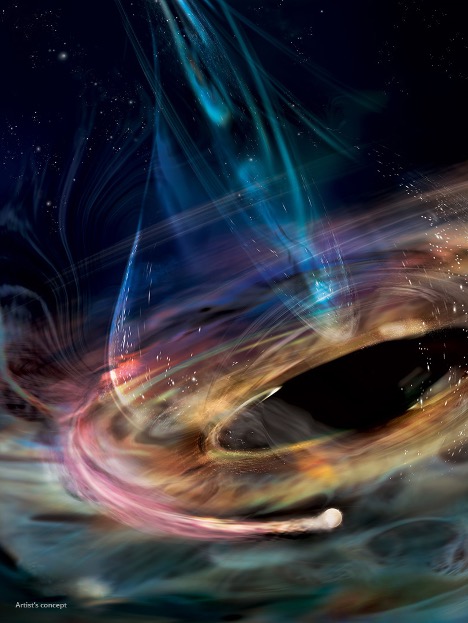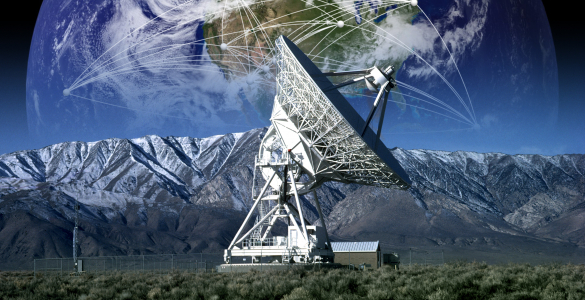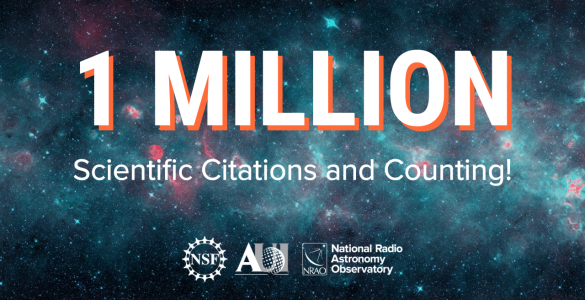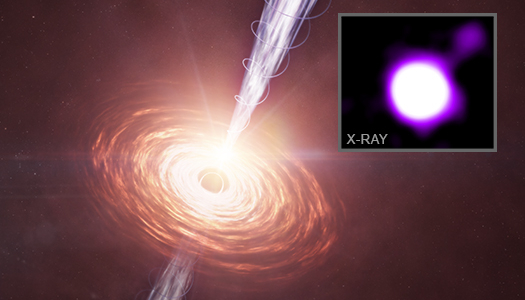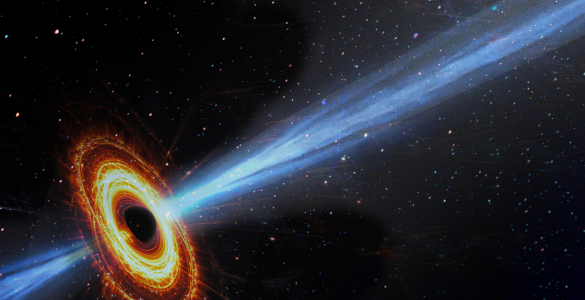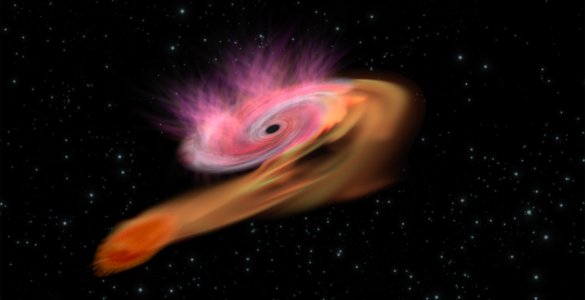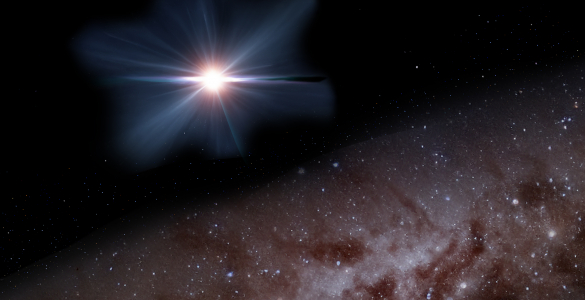International teams of astronomers monitoring a supermassive black hole in the heart of a distant galaxy have detected features never seen before using data from NASA missions and other facilities including the National Science Foundation (NSF) National Radio Astronomy Observatory (NSF NRAO) Very Long Baseline Array (VLBA). The features include the launch of a plasma jet moving at nearly one-third the speed of light and unusual, rapid X-ray fluctuations likely arising from near the very edge of the black hole.
The source is 1ES 1927+654, a galaxy located about 270 million light-years away in the constellation Draco. It harbors a central black hole with a mass equivalent to about 1.4 million Suns.
“In 2018, the black hole began changing its properties right before our eyes, with a major optical, ultraviolet, and X-ray outburst,” said Eileen Meyer, an associate professor at UMBC (University of Maryland Baltimore County). “Many teams have been keeping a close eye on it ever since.”
She presented her team’s findings at the 245th meeting of the American Astronomical Society in National Harbor, Maryland. A paper led by Meyer describing the radio results was published Jan. 13 in The Astrophysical Journal Letters.
After the outburst, the black hole appeared to return to a quiet state, with a lull in activity for nearly a year. But by April 2023, a team led by Sibasish Laha at UMBC and NASA’s Goddard Space Flight Center in Greenbelt, Maryland, had noted a steady, months-long increase in low-energy X-rays in measurements by NASA’s Neil Gehrels Swift Observatory and NICER (Neutron star Interior Composition Explorer) telescope on the International Space Station. This monitoring program, which also includes observations from NASA’s NuSTAR(Nuclear Spectroscopic Telescope Array) and ESA’s (European Space Agency) XMM-Newton mission, continues.
The increase in X-rays triggered the UMBC team to make new radio observations, which indicated a strong and highly unusual radio flare was underway. The scientists then began intensive observations using the NSF NRAO’s VLBA and other facilities. The VLBA, a network of radio telescopes spread across the U.S., combines signals from individual dishes to create what amounts to a powerful, high-resolution radio camera. This allows the VLBA to detect features less than a light-year across at 1ES 1927’s distance.
This text is adapted from a press release shared by NASA. Read their complete release here.
You can access high-resolution versions of these supplemental images in SVS here.
About NRAO
The National Radio Astronomy Observatory (NRAO) is a facility of the U.S. National Science Foundation, operated under cooperative agreement by Associated Universities, Inc.
Original release text by Francis Reddy
NASA’s Goddard Space Flight Center, Greenbelt, Md.
Media Contacts:
Claire Andreoli
301-286-1940
claire.andreoli@nasa.gov
Public Affairs Officer
NASA’s Goddard Space Flight Center, Greenbelt, Md.
Jill Malusky
304-456-2236
jmalusky@nrao.edu
News & Public Information Manager
National Radio Astronomy Observatory, Charlottesville, Va.
Corrina Jaramillo Feldman
505-366-7267
cfeldman@nrao.edu
Public Information Officer – New Mexico
National Radio Astronomy Observatory, Socorro, NM.






